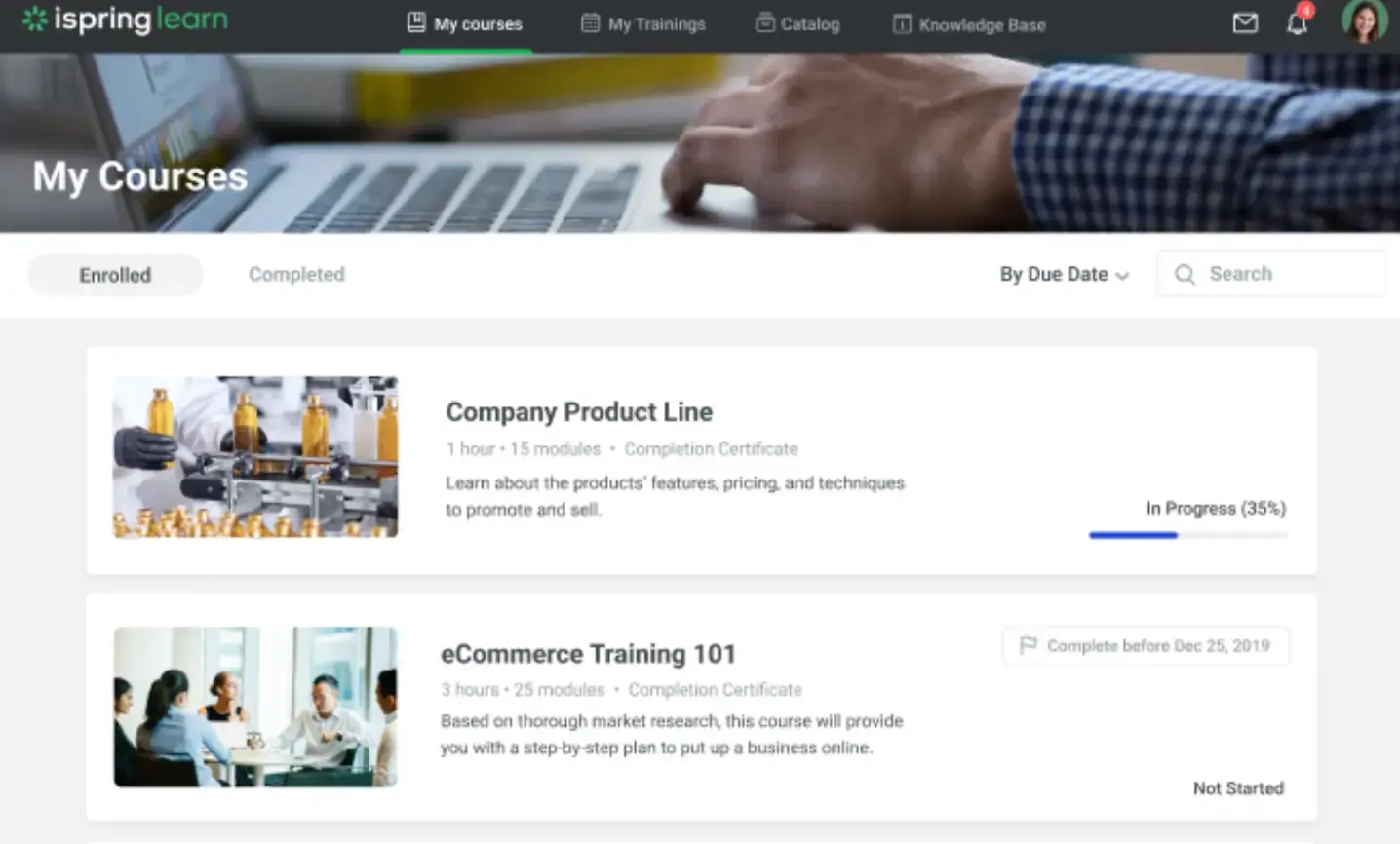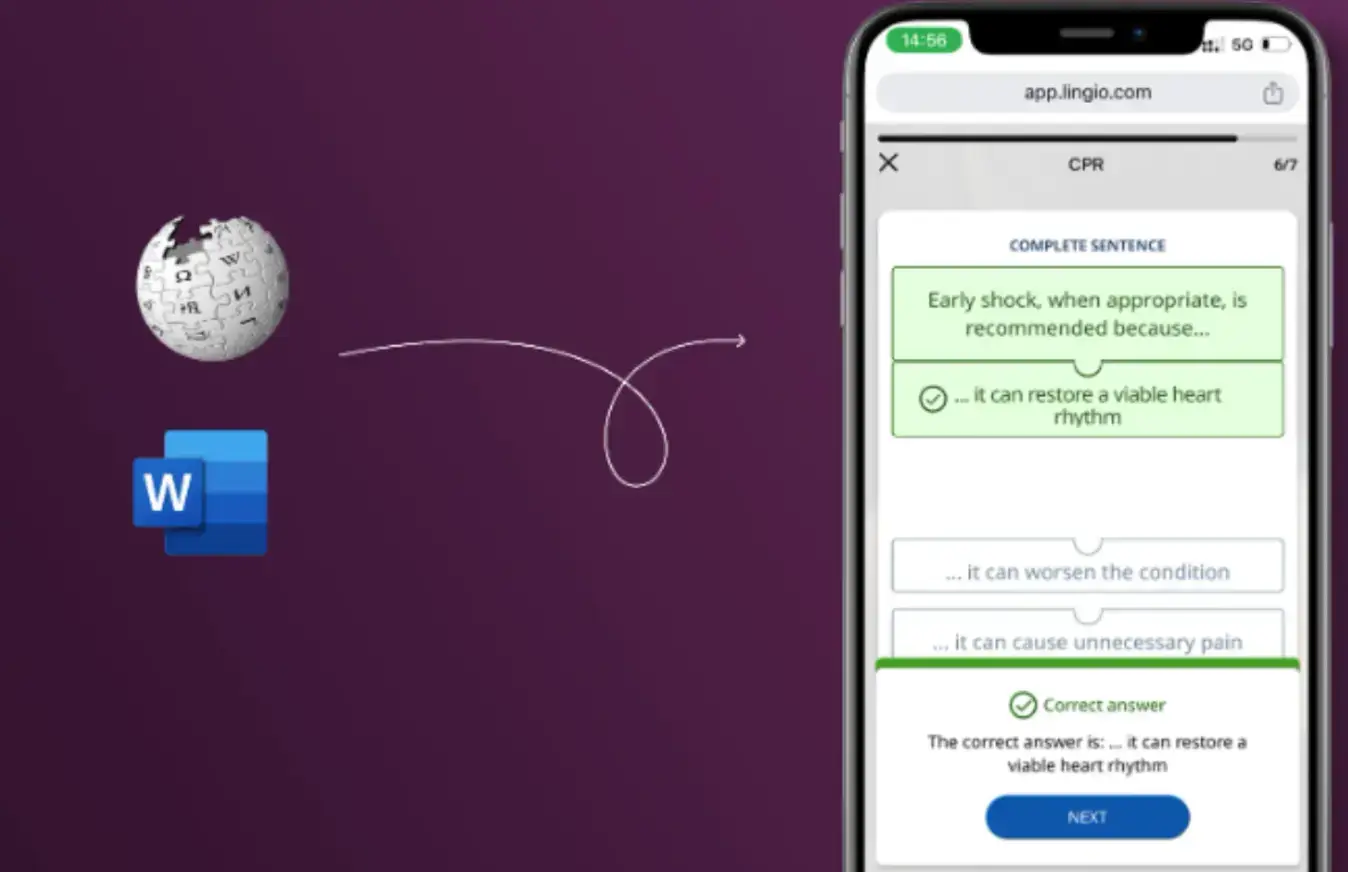Customer education, a vital aspect of our role as product marketers in learning and development (L&D), involves creating engaging and informative learning experiences for our teams.
However, we must also consider how to support our clients and customers in developing the necessary skills to succeed. That becomes particularly important during the early stages of the customer journey when they're still getting to know the company and its offerings.
Many L&D teams face a common challenge in educating customers: determining their learning needs, providing them with the best resources, and ensuring they receive a consistent learning experience. However, the rewards of this effort are significant.
Providing customers with adequate resources and information about your product helps them understand its benefits and highlights its value, inspiring them to make the most of what you offer.
In this article, we will explore six practical steps that will equip you to consistently provide your customers with great learning experiences.
What is Customer Education, and Why Is It Important?
Customer education refers to helping customers show how to use your products and get the most value from them. That ensures that customers get the highest possible benefit from their investment.
When potential customers consider different products or services, they commonly need more information to understand the market and make an informed decision.
Customer education can help them do just that and choose a product that best suits their needs. This process usually happens at several different stages.
When customers decide to buy a product, educating them on how to use it is crucial. This includes learning about the product's features, capabilities, and how it works with other products and systems.
Customer education is different from marketing. It's when businesses provide customers with valuable resources, knowledge, and skills to help them get the most out of a product and improve the overall customer experience.
6 Practical Steps to Level-Up Customer Education
1. Establish yourself as a subject matter expert
Your employees' knowledge and skills are valuable resources for L&D. This expertise can be used to train your teams and help them acquire new capabilities. It can also serve your clients and customers.
Tapping into your team's expertise is essential to help your customers better understand your product and build stronger relationships with them.
The key to achieving this is to create content that effectively communicates your knowledge to your clients. By doing so, you can provide them with a deeper understanding of your product.

Source: ispring
Derick Runion, Founder of Curiel & Runion, pointed out different ways to engage experts and share expertise with customers. It all depends on your business.
For example, LawRank gathered volunteers with the right insights and expertise in the legal industry and rewarded them for their contributions.
When applying expert knowledge, finding help, receiving feedback, and rewarding those contributing can be challenging.
This process often requires reaching out to individuals individually and motivating them to partner with L&D and edit their contributions for consistency. With a structured system in place, it can be a smooth process.
2. Collaborate with other teams for content creation
Producing effective customer education requires the right partnership for content creation. For this, one of your marketing departments, such as brand or customer marketing, can be a natural fit.
These departments focus on offering your customers the best solutions and guidance through webinars or case studies. You can then create practical applications of these best practices for using your product. eLearning courses and videos are the most suitable content formats for this purpose.

Source: Compass Academy
Both teams in this partnership have different strengths that complement each other.
While the marketing team focuses more on demonstrating what's possible, the customer education team must explain the platform's steps directly.
If your organization doesn't have a customer marketing team, you can still start educating your customers by teaming up with the product marketing team.
However, you'll need the right tools, such as a digital platform, to get things rolling.
3. Accelerate customer-centric onboarding
Incorporating customer education into the process can make customer onboarding more efficient and effective.
Although personalized training support is valuable, more is needed for businesses that want to expand and reach more customers.
It takes up too much time and may not reach the right audience. That's where an education program comes in handy. The process can be streamlined and customized to individual needs by offering on-demand and self-serve training.
Integrating a structured mentor-mentee program within your customer education strategy can add a personal touch to automated learning.
It's essential to offer customers different ways to learn about solutions. For instance, you can provide the following options to help them understand how to use the solution:
- On-demand training: This training can be taken anytime for those who cannot attend live sessions.
- Fundamentals certification: This covers everything a new user needs to know to use the solution successfully.
- In-product training: This option provides instructions that appear within the product through a link to a training.

Source: ispring
“Your Customer Education program must be accessible to everyone interacting with customers—not just your training team,” said Martin Fontes, Founder of Fontes Law Group. “That means that other teams, like Customer Success or Support, should know how to use your platform as a tool so they don't have to do the training themselves. Ensure that the right people have access to the right information to ensure the success of your program.”
4. Consolidate customer education resources
Companies often struggle to provide all their customers with accessible and convenient educational resources, such as blogs, reports, training materials, online courses, and support documentation.
Customer education differs from organizational learning, but they both have one thing in common: they require the right digital platform to deliver practical learning experiences.

Source: lingio
“It's essential to migrate your standardized customer education to one digital learning platform to save everyone time and maintain consistency," said Sam Meenasian, Founder of BISU Insurance. “Doing so creates a centralized location for customer education resources and provides predictability in the client learning experience. That allows your team to focus on their primary objectives without interruptions.”
One important thing to consider is making these resources visually appealing. That means that the design of your blog for reports, courses, and other training materials should be aesthetically pleasing and provide a great learning experience.
5. Focus on consistent branding and structure
When starting your customer education program, there is a technique that can help you create impactful and memorable learning experiences.
Another benefit is that it can help you create content more efficiently since you won't have to start from scratch when building new courses.
Adam Zayed, Partner at Zayed Law Offices, noticed that consistency in customer education materials is crucial. Our customer education team has done a great job using the same approach and messaging across the board.
For example, if we use a five-point Customer Education framework to explain something to a client, our Customer Marketing team will use the same material.
6. Measure and improve customer health
Measuring the outcomes of your work in Customer Education and Success is necessary to confirm its effectiveness. You must know if your actions resonate with your customers and end users.
Businesses can measure customer health using NPS (Net Promoter Score) and CSAT (Customer Satisfaction). You should use the right business intelligence tools like Microsoft Power BI, Pyramid Analytics, Salesforce Tableau, and ThoughtSpot to get the most out of these methods.
Another significant metric to consider is customer time to value (TTV), which measures the duration between the contract becoming effective and the project implementation being completed.
For example, one solution may have a TTV of 30 days, while another may have a TTV of 60-90 days. This information helps customers decide which solution best suits their needs and how quickly they can achieve their objectives.
The company aims for 50% of customers to meet the project's standards to ensure customer satisfaction. If the solution falls short, the entire customer experience must be evaluated rather than just the training aspect.
Conclusion
Consumers today are well-informed and rely heavily on online information when purchasing. As a result, including customer education in your brand strategy is crucial and should not be overlooked.
Follow the best practices above to educate your customers and enhance their product knowledge. That will help you grow your business by driving sales and improving scalability.
Author Bio
Irina Weber is an expert on Content Marketing. Irina is an experienced content marketing supervisor and brand manager at SE Ranking. After working in content marketing for enterprises and startups for more than 8 years, she wants to exchange ideas and share information learned with other content marketing experts. She is passionate about digital marketing and is always up-to-date with the latest trends.


